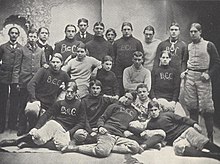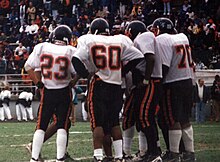
Baltimore City College, known colloquially as City, City College, and B.C.C., is a college preparatory school with a liberal arts focus and selective admissions criteria located in Baltimore, Maryland. Opened in October 1839, B.C.C. is the third-oldest active public high school in the United States. City College is a public exam school and an International Baccalaureate World School at which students in the ninth and tenth grades participate in the IB Middle Years Programme while students in the eleventh and twelfth grades participate in the IB Diploma Programme.

The Baltimore Polytechnic Institute, colloquially referred to as BPI, Poly, and The Institute, is a U.S. public high school founded in 1883. Established as an all-male manual trade / vocational school by the Baltimore City Council and the Baltimore City Public Schools, it is now a coeducational academic institution that emphasizes sciences, technology, engineering, and mathematics (STEM). It is located on a 53-acre (21 ha) tract of land in North Baltimore on the east bank of the Jones Falls stream. BPI and the adjacent Western High School are located on the same campus.
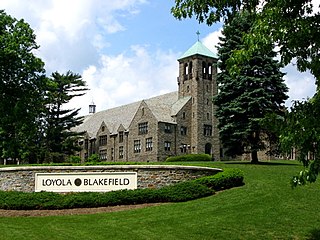
Loyola Blakefield is a private Catholic, college preparatory school run by the USA East Province of the Society of Jesus in Towson, Maryland and within the Archdiocese of Baltimore. It was established in 1852 by the Jesuits as an all-boys school for students from Baltimore, Baltimore County, Harford County, Carroll County, Howard County, Anne Arundel County, and Southern Pennsylvania. It enrolls over 900 students in grades six through twelve. The school was originally called Loyola High School when it was established in 1852. The name change occurred when it added a middle school.

St. Paul's School for Boys is an Episcopal, coed, private school located in Brooklandville, Maryland. It occupies a 120-acre (0.49 km2) rural campus in the Green Spring Valley Historic District, ten miles (16 km) north of the city of Baltimore in suburban Baltimore County.
The Maryland Interscholastic Athletic Association (M.I.A.A.) is a boys' sports conference for private high schools generally located in the Baltimore metropolitan area but extending to various other regions, including the state's mostly rural Eastern Shore. The M.I.A.A. has 27 member schools and offers competition in 17 sports. In most sports, it offers multiple levels of competition, including Varsity, Junior Varsity, and Freshmen-Sophomore teams, and the conference is broken down by separate leagues in each. In addition, members are sorted in accordance to continual performance; categories include 'A', 'B', or 'C' Conferences. Teams of the Association (League) may move up or down according to their performance spanning over the course of a year or so to maintain the competition at appropriate levels. Such levels vary for each sport; a school with a "B-Conference" lacrosse team can have an "A-Conference" soccer team: it all depends on the athletic performance of that particular sport.

Mercy High School is a private and independent Catholic high school for girls sponsored by the Sisters of Mercy and is located within the Archdiocese of Baltimore on a 26-acre campus at 1300 East Northern Parkway in Baltimore, Maryland. It is the only Catholic girls' school in Baltimore City with playing fields onsite.

Patterson High School is a public high school located in the Hopkins-Bayview neighborhood in Baltimore, Maryland, United States.

Randallstown High School is a public high school located in Baltimore County, Maryland, United States. It serves students in the Randallstown, Woodlawn, and Owings Mills areas. It is a part of Baltimore County Public Schools. Its primary feeder schools are Deer Park Middle Magnet School, Woodlawn Middle School, Sudbrook Magnet Middle School, Southwest Academy Middle School, Windsor Mill Middle School and Northwest Academy of Health Sciences.
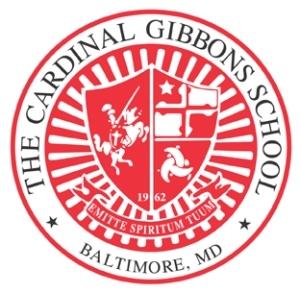
The Cardinal Gibbons School, also referred to as Cardinal Gibbons, CG, and most commonly as Gibbons, was a Roman Catholic high school and middle school for boys in Baltimore, Maryland, USA. A private institution for grades 6–12, Gibbons drew its enrollment from the neighborhoods of southwest Baltimore City and the counties surrounding the Baltimore metropolitan area, with some as far away as Harford County, Carroll County, and Frederick County.
The Bancroft Literary Association and the Carrollton-Wight Literary Society are two competitive forensic societies at the Baltimore City College and are the formal names for the school's speech and debates teams. Founded in 1876 and 1878 respectively, the Bancroft and Carrollton-Wight Societies are the oldest literary societies at a public high school in the United States. Historically, the two societies competed mainly between themselves. The rivalry culminated each year with an annual debate. In the 20th century, the societies began to compete with other secondary schools and some universities. At the time, the teams' most notable rival was Baltimore Polytechnic Institute, City College's chief rival in sports and academics. The Bancroft and Carrollton-Wight Societies disbanded for a time in the 1980s and early-1990s, but were revived in the late-1990s. Baltimore City College is a charter member of the Chesapeake Region of the National Forensics League and the National Catholic Forensic League, and is founding member of the Baltimore Catholic Forensic League and the Baltimore Urban Debate League.

The history of The Baltimore City College began in March 1839, when the City Council of Baltimore, Maryland, passed a resolution mandating the creation of a male high school with a focus on the study of English and classical literature. "The High School" was opened later in the same year on October 20, with 46 pupils under the direction of Professor Nathan C. Brooks,(1809-1898), a local noted classical educator and poet, who became the first principal of a new type of higher institution in the developing public education system in the city begun in 1829. It is now considered to be the third oldest public high school / secondary school in the nation. In 1850, the Baltimore City Council granted the school, then known as the "Central High School of Baltimore", the authority to present its graduates with certificates of completion. An effort to expand that academic power and allow the then named "Central High School of Baltimore" to confer Bachelor of Arts degrees began following the Civil War in 1865, and continued the following year with the renaming of the institution as "The Baltimore City College", which it still holds to this day, with also the retitling of its chief academic officer from "principal" to "president", along with an increase in the number of years of its course of study and the expansion of its courses. However, despite this early elevation effort, it ended at that brief period unsuccessfully in 1869, although the B.C.C. continued for a number of years as a hybrid public high school and early form of junior college which did not fully appear in America in different form until the beginning of the 20th century. Very often the elaborate decorative fancy engraved graduation diploma from the B.C.C. in the late 19th and early 20th centuries was accepted by many other colleges and universities entitling City graduates to enter upper-division schools at the sophomore year,.

The City–Poly football rivalry, also referred to as the "City-Poly Game" is an American football rivalry between the Baltimore City College Black Knights (City) and the Baltimore Polytechnic Institute Engineers (Poly). This matchup is the oldest football rivalry in Maryland. The rivalry is believed to be the second-oldest high school football rivalry in the United States between public high schools, predated only by the English High School of Boston-Boston Latin School football rivalry, which started two years earlier in 1887. The rivalry began in 1889 and the teams have met 134 times in history. City College leads the series 66-62-6.

Maryland Public Secondary Schools Athletic Association (MPSSAA) is the association that oversees public high school sporting contests in the state of Maryland. Organized after World War II in 1946, the MPSSAA is made up of public high schools from each of Maryland's 23 counties and independent city of Baltimore, which joined the association in 1993 when its public high schools withdrew from the earlier longtime athletic league, the Maryland Scholastic Association (MSA) which was founded in 1919. The MSA had been composed of public high schools in Baltimore and private/religious/independent schools on the secondary level in Baltimore and its metropolitan area and the surrounding central Maryland region. It was one of the few state-level interscholastic athletic leagues in the nation composed of both public and private/religious/independent secondary schools. After the Baltimore City public high schools withdrew from the MSA, the remaining private/religious/independent schools conferred and organized two parallel regional/state-wide athletic leagues with sports competition and exercise activities with one for young men and the other for young women. These were the Maryland Interscholastic Athletic Association and the Interscholastic Athletic Association of Maryland, which still exist today. All three state-wide athletic leagues, two for private/religious/independent secondary schools and one for co-ed public high schools exist today marrying on the proud traditions, memories and championships of the old Maryland Scholastic Association (MSA)—one of the oldest state athletic leagues for secondary schools in the country.
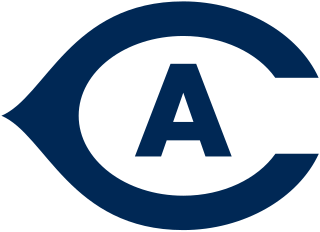
The Battle for the Golden Horseshoe is an annual rivalry college football game played between the UC Davis Aggies and the Cal Poly Mustangs.

Calvert Hall College High School is a Catholic college preparatory high school for boys, located in Towson, Maryland, United States. The school's mission is to make its students "men of intellect, men of faith, and men of integrity." It is located in the Roman Catholic Archdiocese of Baltimore, the first Catholic diocese founded in the Western Hemisphere in 1789.
The 1894 Maryland Aggies football team represented the Maryland Agricultural College in the 1894 college football season. Maryland participated as a member of the Maryland Intercollegiate Football Association, which was formed as a result of a disagreement the previous season over whether Maryland or St. John's College deserved the state championship. The Aggies finished the season with a 4–3 record.

The Baltimore City College boys' basketball team, known as the "Black Knights", or formerly, the "Castlemen", and "Alamedans", is the high school basketball team of Baltimore City College, popularly referred to as "City College", or simply "City". The school's athletic teams were primarily referred to as the "Collegians" prior to 1953, a moniker that is still used alternatively today. One of the earliest results recorded in program history is a one-point overtime road loss to the University of Maryland Terrapins on January 25, 1913. With a recorded history spanning more than 110 years, the program is one of the oldest high school basketball teams in the United States. From 1919 to 1992, the team competed as members of the Maryland Scholastic Association (MSA). During this period the team won thirteen MSA conference championships.

Interscholastic athletics at Baltimore City College date back over 120 years. Though varsity sports were not formally organized until 1895, interscholastic athletics became a fixture at the school earlier in the 19th century. In the late-1890s, City competed in the Maryland Intercollegiate Football Association (MIFA), a nine-member league consisting of colleges in Washington, D.C., and Maryland. City College was the lone secondary school among MIFA membership. The 1895 football schedule included St. John's College, Swarthmore College, the United States Naval Academy, University of Maryland, and Washington College. Between 1894 and 1920, City College regularly faced off against the Johns Hopkins Blue Jays and the Navy Midshipmen in lacrosse.
The Maryland Scholastic Association (MSA) was a high school sports league governing high school sports in the Baltimore metropolitan area. The MSA was established in 1919 and was initially led by Dr. Phillip H. Edwards, a former coach at and then-President of Baltimore City College. The league was established as a central coordinating entity to ensure fair competition and handle operational processes like scheduling games. The MSA was founded as two leagues of approximately six teams each "to allow the difference in strength among some of the teams." The winners from each league initially played to determine a city champion. Founding members of the MSA included Baltimore City College, Baltimore Polytechnic Institute, The Donaldson School, Dunham's School, Friends School of Baltimore, Loyola Blakefield, Mount Saint Joseph High School, Park School of Baltimore, William S. Marston School. Ultimately, MSA membership included public high schools from Baltimore City and surrounding counties, as well as Roman Catholic, other religious, and independent private schools.

